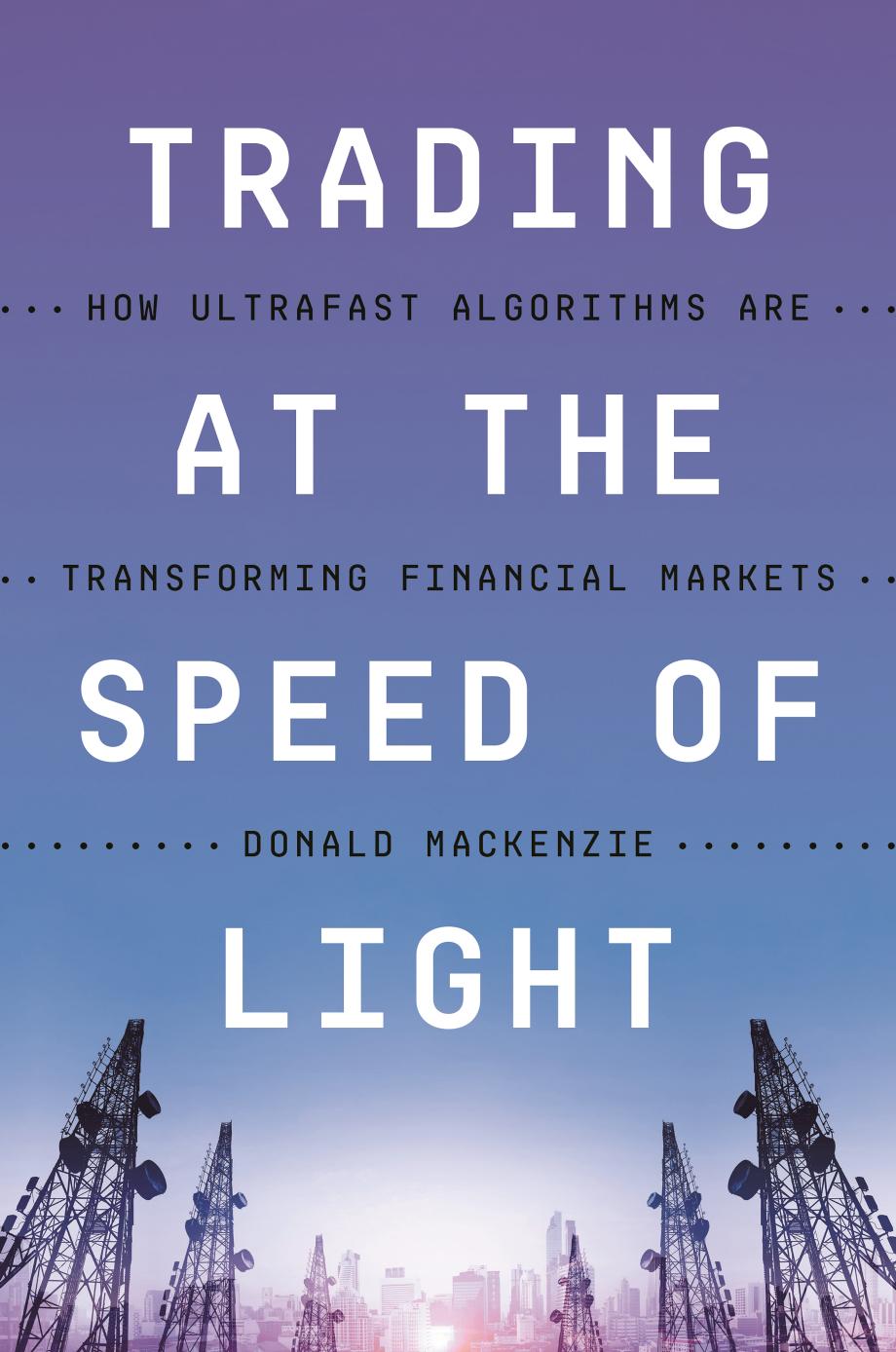Trading at the Speed of Light by Donald MacKenzie

Author:Donald MacKenzie
Language: eng
Format: epub, pdf
Publisher: Princeton University Press
Published: 2021-02-03T00:00:00+00:00
Pilosov, similarly, says that on his link, âbasically every summer morning you would experience attenuation.â
Millimeter Wave and Lasers in New Jersey
What gave and still gives the ChicagoâNew Jersey fiber-optic and microwave links their huge importance to HFT is the signal that I call âfutures leadâ (whose history was explored in chapter 2) and, more generally, the connections between the trading of futures and the buying and selling of shares and other underlying financial instruments. Another class of signal, which I call fragmentation (by which I mean signals that are generated by the trading of the same shares in different places; see table 3.2), grew in significance as the number of exchanges and other venues trading US shares increased. Those exchanges and trading venues, and their matching engines, are almost all based in the triangle of New Jersey datacenters shown in figure 1.3. (A fourth datacenter, NJ2, close to the Hudson River, was important in the recent past but no longer plays a large role in HFT.14) With all the leading shares being traded in all the New Jersey share-trading datacenters, the transmission of data among those datacentersâNew Jersey âmetro,â as those involved call itâhas become an activity nearly as salient as the microwave links to Chicago. There is a similar cluster of metro links around Greater London, and also in Chicago between Cermak and the Chicago Mercantile Exchangeâs suburban datacenter. For simplicity, however, I concentrate here mainly on New Jersey, the most important of these clusters. (For the same reason, Iâm also not going to discuss the financial worldâs long-distance microwave routes other than ChicagoâNew Jersey. The most important of these other links are those between Washington, DC, where the release of US macroeconomic data takes place, and the trading datacenters in Chicago and New Jersey; and the link that connects Londonâs financial markets to Frankfurt. The latter route is examined in detail in Laumonier [2019].)
The importance of speed of transmission among the various New Jersey datacenters in which shares are tradedânow axiomaticâtook time to be recognized fully. As Mike Persico, founder of Anova Financial Networks, puts it, when he first got involved in New Jersey metro in 2009, âlow latency [fast speed] was [often] just a marketing term.â Those who used the term often âdidnât believe it. They didnât live it.â It seems, for example, to have been quite common for the big banks that acted as brokers for institutional investors simply to lease fiber-optic links from telecom companies without inquiring in detail into the routes taken by those links. Thus it could easily happen, as interviewee TO told me, that the cables leased by banks did not run directly between the New Jersey share-trading datacenters but indirectly via the telecom hub, Halsey, in Newark. (It is, for example, quite possible that some of the complaints about HFT algorithms exploiting institutional investorsâ orders reported in Lewisâs Flash Boys [2014] were the result of issues of this kind, with banks not paying enough attention to the material means by which those orders were distributed among datacenters.
Download
Trading at the Speed of Light by Donald MacKenzie.pdf
This site does not store any files on its server. We only index and link to content provided by other sites. Please contact the content providers to delete copyright contents if any and email us, we'll remove relevant links or contents immediately.
Storytelling for dummies by Andrea Fontana(1492)
Effortless by Greg McKeown(1433)
The Practice by Seth Godin(1403)
Mastering Blockchain by Lorne Lantz(1392)
Blockchain Quick Reference by Paul Valencourt & Samanyu Chopra & Brenn Hill(1149)
Mastering Blockchain by Lorne Lantz & Daniel Cawrey(909)
The wind in the willows by Kenneth Grahame(848)
How to Lead by David M. Rubenstein(823)
The Ape in the Corner Office by Richard Conniff(789)
Social Media Engagement For Dummies by Aliza Sherman(710)
Handbook of Big Data Analytics by Unknown(710)
Taking Care of Yourself (HBR Working Parents Series) by Harvard Business Review(696)
Getting Started with Data: The first book you should read to successfully get along with data. by Menegatti Gabriel & Team Simbiose Ventures(693)
FunRetrospectives: activities and ideas for making agile retrospectives more engaging by Paulo Caroli & Tainã Caetano Coimbra(691)
Business Storytelling For Dummies by Unknown(670)
Evernote for Self Publishing: How to Write Your Book in Evernote from Start to Finish by Jose John(667)
Help! My Facebook Ads Suck-- by M. D. Cooper & Jill Cooper(652)
A Leader Listens by Ajay Banga(639)
Genius by Choice: Your unconventional A–Z handbook to enhance your learning process by Remondino Giulia S(638)
